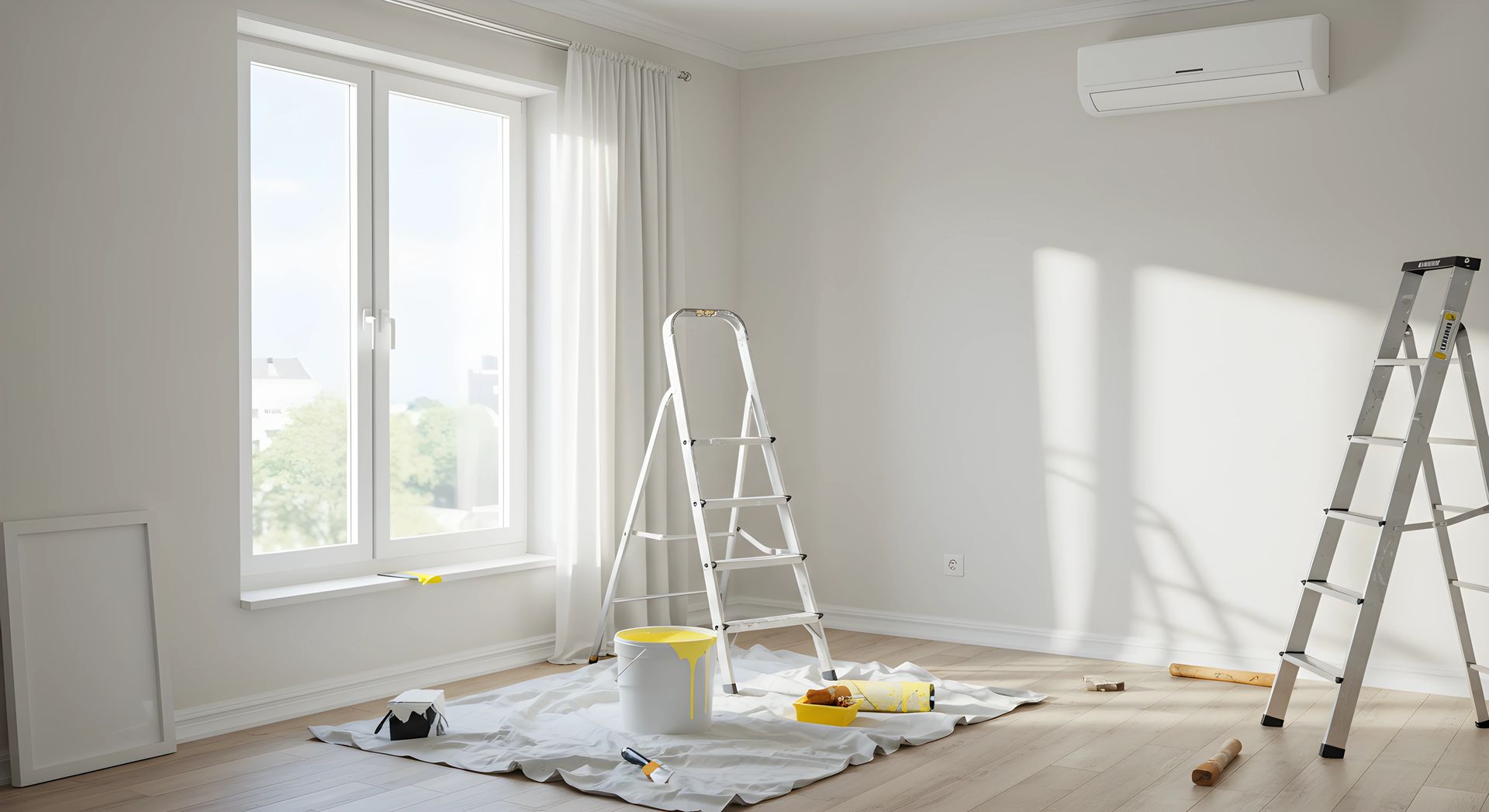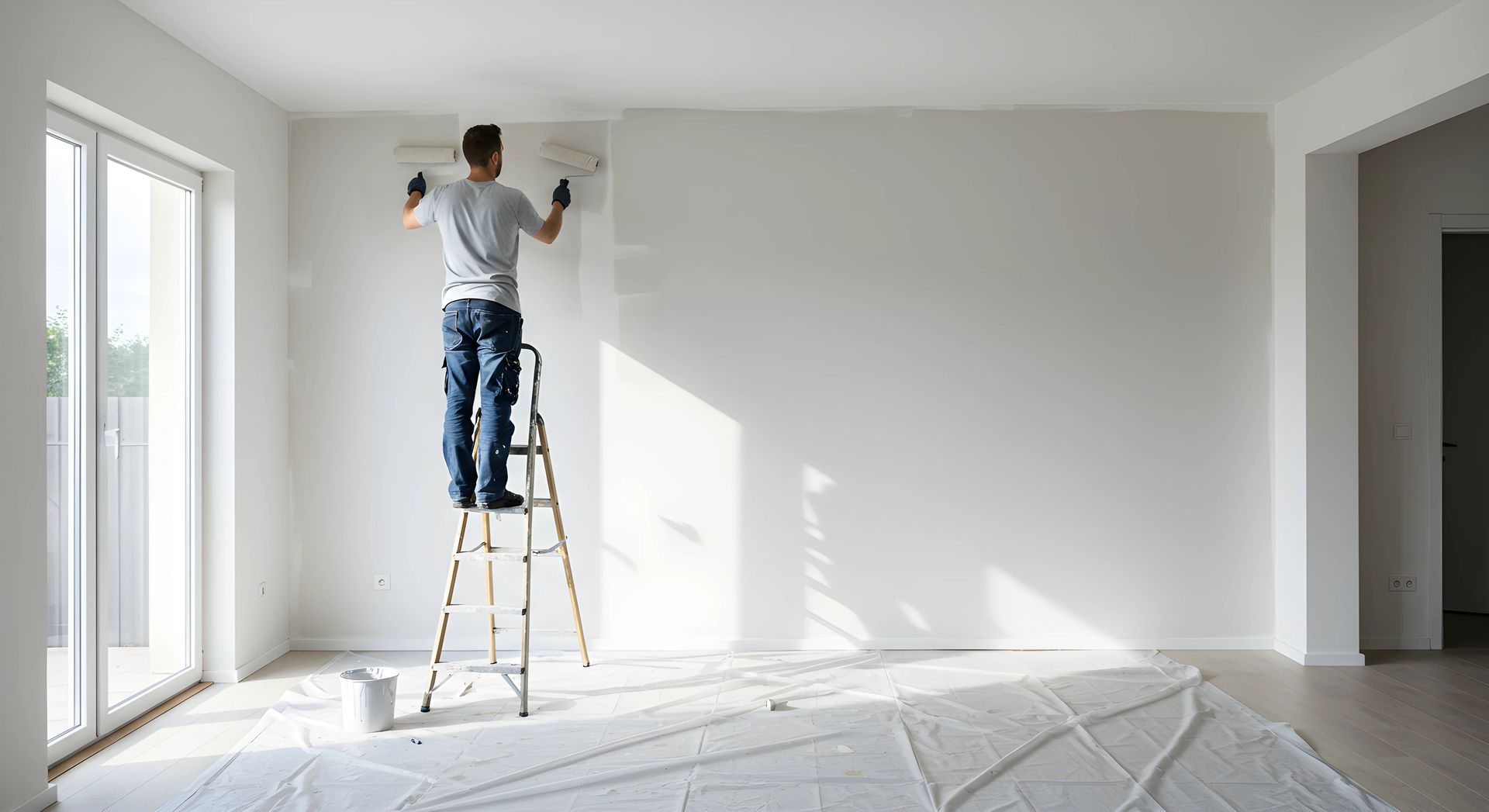The right paint finish has the power to redefine a room. It’s not just about color—finish affects durability, maintenance, and even how big or bright your space feels. Choose the wrong one, and you might find yourself constantly touching up walls or dealing with an unintended glare.
So, which finish is right for you? Let’s break it down.
Matte: Soft, Subtle, and Forgiving
Matte (or flat) finishes have zero shine, which makes them perfect for masking wall imperfections. They create a soft, sophisticated look and work well in low-traffic areas.
Best for: Bedrooms, ceilings, and adult living spaces where walls don’t take a beating.
Pros: Hides blemishes and surface flaws
Provides a rich, elegant look
No glare, making it great for deep or dark colors
Cons: Harder to clean—scuffs and stains don’t wipe off easily
Not ideal for high-traffic or kid-friendly areas
Satin: The Versatile Middle Ground
Satin finishes are a balance between matte and gloss. They have a slight sheen—just enough to make them easier to clean but not so much that they highlight imperfections.
Best for: Living rooms, hallways, kitchens, and kids' rooms—anywhere you need a durable yet attractive finish.
Pros: More washable than matte, making it great for busy spaces
Subtle sheen adds depth without being too shiny
Resists mildew, making it a solid choice for kitchens and bathrooms
Cons: Can highlight surface imperfections
Requires careful application—overlapping strokes may show
Gloss & Semi-Gloss: Bold, Bright, and Durable
Gloss and semi-gloss finishes are highly reflective, making them the most durable and easiest to clean. They’re ideal for areas that see a lot of moisture, fingerprints, and scrubbing.
Best for: Trim, doors, cabinets, and bathrooms—places that need frequent cleaning.
Pros: Highly durable and moisture-resistant
Wipes clean with ease—perfect for high-contact surfaces
Adds a sleek, polished look
Cons: Highlights every bump, scratch, or roller mark
Too much shine can be overwhelming in large spaces
Choosing the Right Finish: Practical Tips
Consider traffic levels: High-traffic areas need durability—satin or semi-gloss will hold up better than matte.
Think about lighting: Glossy finishes reflect light and can brighten a space, while matte absorbs it for a softer feel.
Factor in maintenance: If you have kids, pets, or high-traffic zones, go with something easy to clean, like satin or gloss.
Test before you commit: Test a small patch on your wall and watch how it changes with the light throughout the day. Lighting can dramatically change a finish’s appearance.
Final Thoughts
Paint finish isn’t just a detail—it’s a game-changer. Whether you want the richness of matte, the balance of satin, or the durability of gloss, choosing the right one will ensure your walls look great and stand the test of time. Take a moment to assess your space, think about practicality, and pick the finish that fits your lifestyle best.



